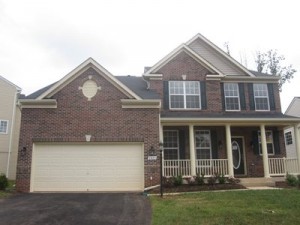 Northern Virginia home buyers are fortunate in being able to select from a wide variety of home styles. A look at homes in the area is sort of like time traveling – area housing styles mirror the fashions of the time they were built.
Northern Virginia home buyers are fortunate in being able to select from a wide variety of home styles. A look at homes in the area is sort of like time traveling – area housing styles mirror the fashions of the time they were built.
If you’re looking for a Tudor Revival (a.k.a. “Mock Tudor”) home, for example, your best bet is to concentrate on older suburbs such as Arlington, because this style, which is characterized by the use of medieval touches such as decorative half-timbering, steeply pitched roofs and diamond-paned windows, reached the height of its popularity in the 1920s and 1930s.
Here are some popular housing styles in northern VA:
Colonial Revival (1880-1960) is derived from the Georgian and Federal styles of early American housing. These houses feature two or more stories with a symmetrical facade, a small portico and a center hall. These houses are formal with hallways and doors clearly delineating the transitions between rooms.
American Foursquare (1880s-1930s). As the name suggests, American Foursquare houses were square houses with 4 rooms on the ground floor and four rooms on the second floor. They featured wide porches that extended the whole length of the home’s front façade. American Foursquares are designed to make maximum use of small city lots.
The Bungalow had its heyday in the 1900s-1940s. Bungalows are usually 1 – 1 1/2 stories high. They have a low-pitched roof with broad eaves that often extend to cover large front porches. The porches usually open directly into a living room. Unlike the more traditional colonial houses, bungalows eschew hallways and other formal features; rooms flow into each other, creating a sense of sprawling, comfortable space. Because of the large, covered front porch, the living room of a bungalow often can be dark.
Modeled on the cozy cottages that kept our Pilgrim Fathers and Mothers warm through long New England winters, the Cape Cod-style house (1920s-1960s) has a small footprint that makes it easy and economical to build, heat, cool and maintain. The signature feature of a Cape Cod is the chimney that is located in the center of a steep, gabled roof. The front door is dead center in the front of the house, directly beneath the chimney. The front door is symmetrically flanked by windows on either side. A Cape Cod is a great choice for a small family or a first-time homebuyer.
Ramblers, as their name suggests, cover a lot of ground. In our area, they were most popular in the 1950s to early 1970s when developers such as Broyhill began developing large tracts of land in Northern Virginia. Ramblers are built on a single story with the entire width of the house facing the street. Garages are incorporated into house plan and, since ramblers are largely unornamented and since the garages usually face the street, they are often the most noticeable feature of the house facade. As land values soared in Northern Virginia, developers gravitated toward housing styles with a smaller footprint such as colonials.
Though ramblers are often dismissed as soulless, suburban tract houses they have many advantages:
- Because the house is on a single level, ramblers are especially attractive to seniors who can age in place without having to deal with stairs.
- Because of their relatively large lots, ramblers also provide more privacy to their owners and greater opportunities for expanding the house out and up.
- The rambler’s big footprint also makes it possible to “pop the top” and expand the house vertically without having to go to the expense of creating a new foundation for an addition.
The recent trend has been a return to a reimagined version of the Colonial home. Variously known as Neo-colonial or Builders Colonial, this style is loosely based on Georgian, Federalist and Colonial Revival architecture. Neo-colonial has become the most popular style in recent times because it is economic to build and maintain. Neo-colonial houses are built on multiple levels so they have a small footprint; this means they have a lower land cost and are less expensive to heat and cool.
Neo-colonial homes differ from Colonial Revival homes in that Neo-colonial homes are intended to deliver the traditional “feel” of a colonial home while making use of high-tech features and low-maintenance, modern building materials. Living areas in Neo-colonial homes are lighter and more spacious. In the Neo-Colonial home, the strictly demarcated rooms of the Colonial Revival home have given way to great rooms and open spaces. Skylighting and larger windows bring the outside inside.












Speak Your Mind
You must be logged in to post a comment.